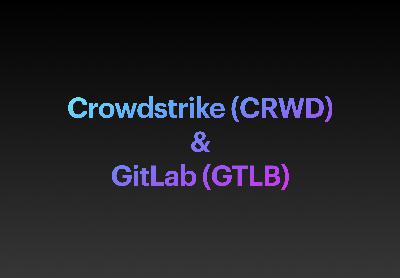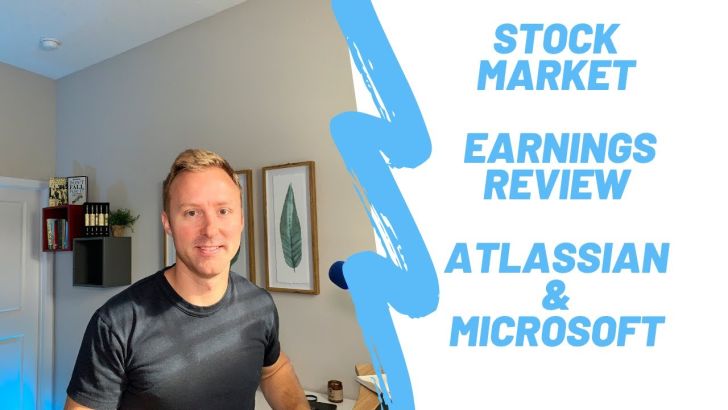Weekly Update (March 7 - March 11)
Description
Happy Friday,
Welcome to a different kind of weekly update. I’m not going to talk about the weekly performance of the market or my portfolio. Thinking about that is a distraction from my goal of relentlessly finding, studying, and owning the best companies I can for the next 30 years. I’ll do performance updates once a month (or quarter).
Instead, we’re going to cover
* My current portfolio
* Any meaningful news from my companies this week
* What I’m buying with next week’s contributions
* Upcoming posts for subscriber
* Bonus section: Mean tweets from the haters
1. My current portfolio
You can always see my latest transactions & current portfolio on Commonstock (link)
The rest: Mercardolibre (MELI) 4.3%, Twilio (TWLO) 4.3%, Zoom (ZM) 4.2%, Fidelity National Financial (FNF) 2.7%, Mastercard (MA) 2.7%, Broadcom (AVGO) 2.6%, American Tower (AMT) 2.6%, Advanced Auto Parts (AAP) 2.6%, Lowes (LOW) 2.6%, Abvie (ABBV) 2.6%, 3m (MMM) 2.5%, Raytheon (RTX) 2.5%, Amgen (AMGN) 2.5%
A quick thought about my allocation strategy
I think about my portfolio in two buckets on a sliding scale.
Bucket #1 is dividend growth stocks: I currently have 25% of the portfolio and future contributions allocated to dividend growth stocks. This bucket consists of 10 stocks at a 2.5% allocation of my total contributions each.
Bucket #2 Growth Stocks: I currently have 75% of the portfolio and future contributions allocated to growth stocks. This bucket consists of 25 stocks at roughly a 5% allocation each. You can see the exact numbers at the link above.
This scale will slide between 75% growth stocks and 25% dividend growth stocks to the other extreme of 75% dividend growth and 25% growth stocks. Right now it is weighted towards the growth extreme because I believe there is very good risk/reward in high-quality growth stocks. As (or if) those multiples start to come up, then I’ll adjust my portfolio to be weighted more towards dividend growth stocks as I see fit.
I will generally try to make these adjustments over time through new contributions instead of by selling to avoid taxes.
2. Company News
Twilio (TWLO) CEO Jeff Lawson at Morgan Stanley 2022 Conference
No major announcements from this conference, but here are my key takeaways
* Believes their customers’ digital roadmaps were accelerated by 6 years due to Covid. However, that doesn’t mean all of the work was piled into year 1 or 2.
* Even brick and mortar businesses have drastically accelerated digital projects which likely would not have happened nearly as quickly pre-covid.
* Twilio roadmap is informed by customer needs/demand from data on their platform
* Twilio’s customer data platform (CDP) Segment is #1 in market and growing very fast because of two tailwinds. #1 was need to move to digital #2 was need to understand all of the new data companies had on customers from new digital intiatives.
* Lawson believes there is still tremendous growth ahead for Twilio but that they should, can, and will do it as a profitable company starting in 2023. He’s committed and excited for that for the company.
* When asked about domestic growth slowing (direct quote here) “The biggest thing is messaging is obviously a big part of our business. In the U.S., there's been about trusted communications. So, when you get a text message from I don't know, you're a pharmacy or your kid's school, you know that it's authentic. Right now, you get text messages from businesses, what are they? They're a 10-digit number or like a 6-digit number, claiming to be the pharmacy. You're like is this my kid's school? Is this the pharmacy, or is this just a robo dialer or a hacker or some fraud scheme going on, right?
The ecosystem needs trust. So, we need to attach identity to these phone numbers. We need to verify who those customers are, and then we need to pass it through. So, when you get a text message, it doesn't say from +1 415, something. It says from pharmacy. It's coming from the school. And there's a green pad mark on it that says, you trust it. That will open up so many more avenues of interest in commerce that can be done over these channels. But, it's a bit of a painful evolution. As we've been retooling our product, it has not been without pain. And so, we are working every day to remove friction from that process, but I think it has impacted some of our domestic growth.”
* Jeff also spoke about the recent executive turnover and emphasized that it’s a natural part of a company growing and that they made those transitions very thoughtfully up to a year in advance. I’m comfortable with those answers.
ServiceNow (NOW) CFO Gina Mastantuono at MS Media & Telecom Conference
* Customer/partner retention has been very strong as NOW evolves from a set of products to a platform company. 7 out of 10 large partners have committed to $1 billion businesses with them over the next few years with the remaining 3 planning to commit this year.
* Have seen no slowdown in demand from situation in Ukraine/Europe.
* ServiceNow wants to be the defining enterprise software company of the 21st century. Revenue target is $10 billion in subscription revenues by 2024, $15 billion by 2026. For reference, NOW earned $5.57B in subscription revenue for 2021. If they hit these targets they will be tripling revenue in 5 years.
Here’s a direct quote from the CFO of how they intend to get there:
with our current customers and current products, there's the ability to grow 5x our ACV. And that's all about the platform, right? It's all about really leaning into customers who only have one or two workflows and really being able to help accelerate time to value, help accelerate productivity and efficiency. Less than 20% of our customers today have three or more workflows, right? So, the white space for up-sell and cross-sell remains phenomenal. So that's one vector.
If you think about our penetration in the US, which is by far our largest penetration, I think Gartner says IT is like 50% penetrated. We're taking out legacy homegrown systems. There's no reason why that 50% is not 80% and 100%, so a lot of continued white space on IT. And then if you think about outside the US, where penetration is quite low comparatively, there's such opportunity in both Europe and APJ.
And then if you think about the innovation that we've been pulling through the platform, if you think about AI, machine learning, you think about our enterprise and pro SKUs, there's continued upside and penetration that we can continue to drive there. So those are three levers that I would say are pretty meaningful in our path to $10 billion by 2024 and $15 billion plus in 2026.
On competition in the marketplace from Salesforce, Pegasystems, Appian, and even Microsoft:
Yes. I think we're seeing all of them in the marketplace. I mean they all have platform capabilities and low-code capabilities. Where I think we differentiate is we're able to build complex applications in days as opposed to months, right? Simple applications are easier to do. But the more complex ones, I think we're winning where the more complex applications are what they're trying to build. And so again, it's a one-platform approach. It's really being that trusted platform of the IT organization. And it's really where complex workflow orchestration is required. It's where you're seeing us win.
Upstart launches mobile-first auto-retail online platform and a big partnership with Volkswagen.
This is an exciting development and shows how Upstart is innovating and leveraging its AI-lending model to grow into new markets. Link to press release
Upstart Auto Retail adoption among car dealers grew nearly 4X1 in 2021 thanks to its unique combination of in-store customization for dealers and online access for customers. In addition, VW is the latest OEM to announce support for Upstart Auto Retail. Upstart introduced AI-powered financing in 2021, so dealerships could offer affordable financing to more of their customers.
Dealers on our online platform see 66 percent of their traffic come from mobile devices. If you want to deliver the modern buying experience that today's car buyers expect, you absolutely need a world class mobile experience,” said Michia Rohrssen, GM of Upstart Auto Retail, “Buying a new car is not always a linear process, so we designed the new, mobile-first, online platform not only to adapt to the mobile usage of customers, but also to give the dealer more options to customize for each type of shopper and the pace of purchase.
Upstart Auto Retail is also slated to introduce a new device-agnostic in-store platform and make its AI-powered financing solution available to more customers around the country later this year.
Upstart Auto Retail’s digital retail platform seamlessly combines the online and in-store experience with financing and manager tools, making it easy for car buyers to browse, shop, and build deals any way they choose. The Upstart Auto Retail digital retail platform consists of four key components — Online, In-Store, Real-Time Approvals, and Manager Portal. Pricing for the complete platform is
























